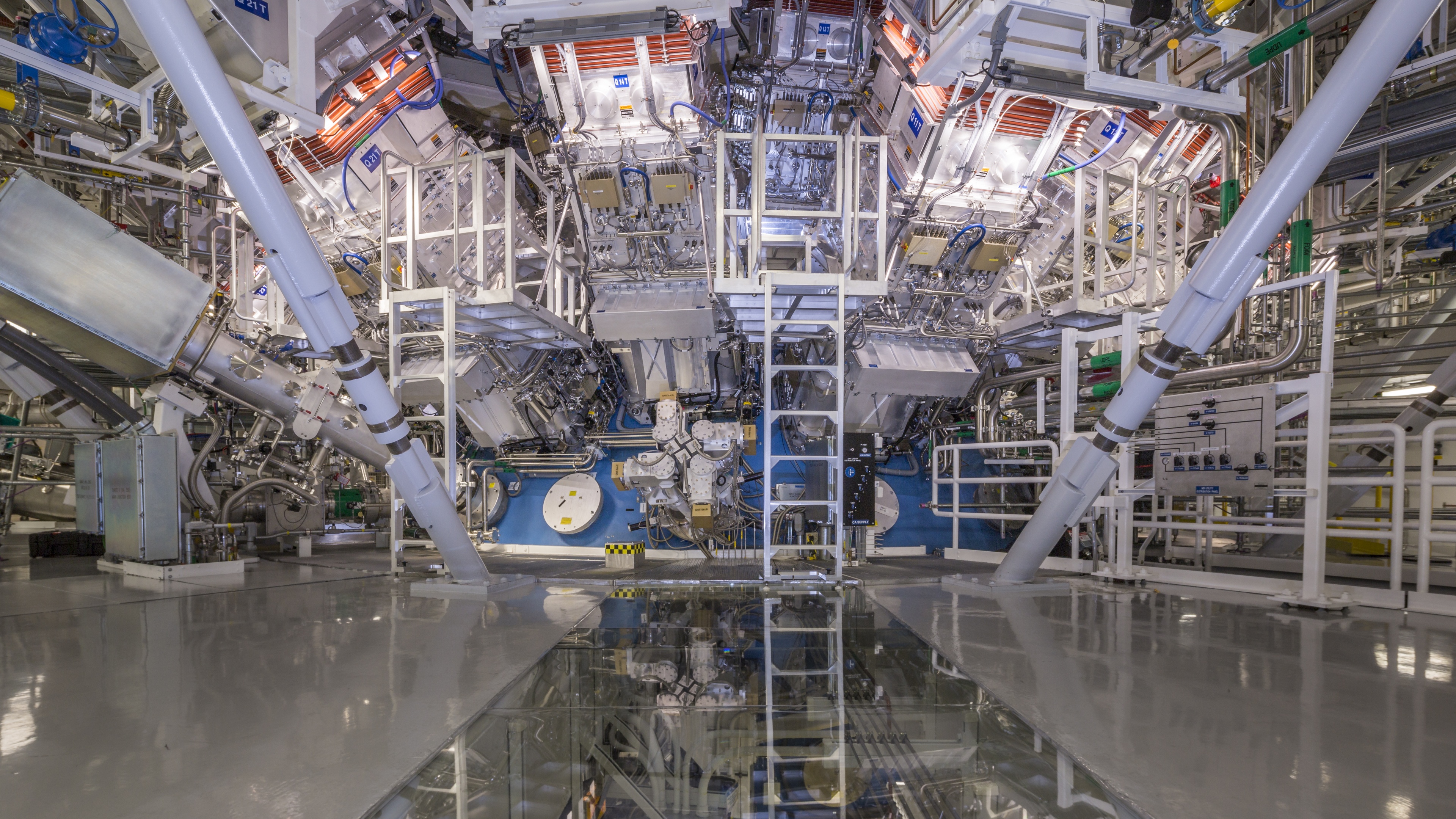The NIF is not only reminiscent of the warp reactor from Stark Trek: Into Darkness. It’s the warp reactor of the new Enterprise!
Nuclear fusion is something like the holy grail of power generation. If mankind should ever succeed in taming the fire of the sun, almost all of our energy problems would be solved in one fell swoop. Now there is said to have been a decisive breakthrough in fusion research. This is reported, among other things, by Washington Post.
Accordingly, researchers at the NIF (National Ignition Facility) in the United States succeeded for the first time in gaining more energy from nuclear fusion than was put into it. What’s the message?
The world’s most powerful lasers fuse hydrogen
First of all, it should be mentioned that there is still no official confirmation from the LLNL (Lawrence Livermore National Laboratory) where the NIF is operated. However, it is expected at 4 p.m. this afternoon.
By the way: Star Trek fans should be familiar with the NIF (pictured above). In the twelfth feature film in the hit Star Trek film series – Star Trek: Into Darkness – the high-power lasers mimic the warp reactor.
The deuterium-tritium sphere sits at the top of the holder during fusion.
What role do lasers play in fusion? The NIF uses what is known as inertial fusion. This is also called inertial or laser fusion. The most powerful lasers in the world are aimed at a sphere made of deuterium and tritium (both isotopes of hydrogen). The pressure and high heat (100 million degrees) fuse the two isotopes (the same number of nuclei as normal
hydrogen, but different number of neutrons) to a helium nucleus.
The highlight: the fusion of two hydrogen nuclei theoretically releases far more energy than is necessary for the fusion. If this were not so, there would be no light or any element in the universe other than hydrogen. In contrast to gigantic stars, which, due to their sheer mass, generate such high pressure and thus heat in the core that fusion is stimulated, we have to use tricks to help ourselves.
Important: Stars also have much more time for fusion because, despite the high pressure and heat, merging percentages are very rare. The fact that stars can still sustain fusion fire is simply because they have so much mass that enough fusions occur despite their rarity.
New space telescope
How it could change the way we look at humanity
Real breakthrough or just sensational news?
For us humans, inertial fusion is just one potential way to make nuclear fusion a reality on Earth. You may have heard of ITER before. This is an experimental reactor in Cadarache, France, which generates energy by magnetically confining a plasma (according to the tokamak principle). There is also the stellarator, which causes a stir with its highly complex coiled superconductors.
What does the potential success at the NIF mean? The fact that more energy could be extracted than was put into it sounds promising. But even if the media reports should be confirmed, that does not mean that we can already generate usable energy in the form of electricity with it. A lot of energy is lost on the way to mains power. But it could still be a breakthrough. For an experimental reactor, it is initially only important to prove that a positive energy balance is possible at all.
Graphic representation of the laser arrangement centered on a center point. Image source: LLNL)
There is an indication of an actual milestone: About a year ago, the NIF managed to increase performance by a factor of 25. 1.9 megajoules were invested in the inertial fusion at that time and at least 1.3 megajoules came out of it – that’s about 70 percent. A remarkable value, which was already achieved in the 1990s with magnetic fusion using a deuterium-tritium reaction.
In any case, we are very excited to hear what the LLNL will officially say this afternoon and will of course keep you posted. Maybe this time it really is only
30 years until commercial nuclear fusion. Until then, you can deal with the following exciting topics:
how do you see it? Do you believe in the big breakthrough, or do you just think it’s a sensational report? Write it to us in the comments!












